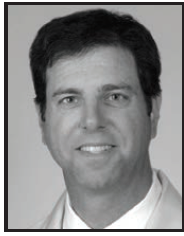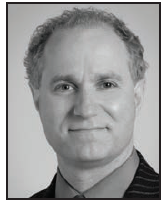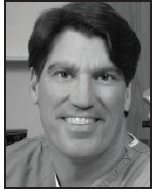



The following article highlights key questions addressed during a roundtable discussion of the role of personalized CONTOURA Vision (Alcon) topography-guided LASIK among today’s selection of refractive treatments. Led by Kerry D. Solomon, MD, the panel included Daniel S. Durrie, MD; Ronald R. Krueger, MD; and Karl G. Stonecipher, MD.
All of you have begun using the WaveLight Topolyzer VARIO Diagnostic Device (Alcon), a topographer whose data are used to plan and program topography-guided laser refractive surgery with CONTOURA Vision. Can you tell us something about how the device fits into your practice? How much space does it require? Where does it reside? Does it require certain environment or lighting conditions for maximum efficacy? How does it affect patient flow in your practice?
Daniel S. Durrie, MD: The device is fairly small. The size and space requirements are similar to most other diagnostic devices we have in our practice. Unlike other devices, where we are usually replacing an old device with a new one, we had to find a new space for the Topolyzer VARIO. I think the fact that the system is innovative actually makes it easier to bring in people for training because they are not used to using it in another location in the office or in the laser center versus the practice. Surgeons can figure out where it works best for them.
Karl G. Stonecipher, MD: I think if I look at my colleagues’ offices, I would find that they have placed this unit in a spot chosen to encourage good patient flow. Our Topolyzer VARIO is in our diagnostic room. CONTOURA Vision is dependent on getting good pictures, and you may have to take four or eight pictures for each patient to obtain predictability and consistency. The next step is to get familiar with the ins and outs of Topolyzer VARIO hardware and the software so that using the device becomes comfortable as well. That helps the practice maintain patient flow and helps you make decisions about the best candidates and calculations for topography-guided treatment.
Ronald R. Krueger, MD: In practice, using Topolyzer VARIO is similar to capturing wavefront data for wavefront-guided surgery. It is important to capture highly accurate topographic maps with the Topolyzer VARIO as the starting point for surgery. Multiple captures are necessary to assure the maps in closest agreement are chosen to filter out noise. It is preferable to set up the Topolyzer VARIO in a room with consistent lighting and near other diagnostic devices that are required in the patient workup.
Does that similarity to wavefront-guided preparation in terms of patient flow extend to the testing environment? Wavefront aberrometry typically occurs in a fairly dark room. Is the lighting important to the location of Topolyzer VARIO testing for the topography-guided CONTOURA procedure? Does the room need to be darkened, or are there any other environmental considerations?
Dr. Krueger: You will need some background light to see what you are doing when lining up the patient. That makes the pupil a little bit smaller, but it can mirror the surgical environment, where you also require some illumination when visualizing the eye during the procedure. The environment should not be too dark when you capture the topography.
Dr. Stonecipher: I think the Topolyzer VARIO will work well with whatever a practice already has in its diagnostic center. In our diagnostic room, we have light meters to create an environment similar to the operative suite.
Dr. Durrie: The lighting absolutely needs to mirror the operating room. The pupil you are treating has to be similar. If you have a patient with a 2-mm pupil because the lights are on, and then you position the patient underneath a laser in a room where the lights are down low and the pupil is changing, there will be problems. I think that is an important point that people do not always understand with topographic-guided CONTOURA Vision treatment. The pupil you measure as you perform the preoperative topography has to be similar to the one you see underneath the laser.
The task of maintaining good patient flow begins with an ingrained decision-making process to determine which patients get which tests. Next, is the testing and surgical decision-making. Finally, you make a recommendation for the CONTOURA Vision topography-guided procedure or another option. How do these steps take shape in your practice? Do all of your refractive surgery patients have Topolyzer VARIO topography during their evaluation? How do you go from Topolyzer VARIO testing to recommending the CONTOURA Vision topography-guided procedure?
Dr. Durrie: All of my patients are going to get cataracts at some point and have their lenses replaced, hopefully by us. With this in mind, I want to optimize the corneal optics resulting from refractive surgery for the long-term benefit of my patients. Knowing that internal aberrations are a possibility with implantation of an intraocular lens, I feel very comfortable making the topography better now, knowing that it will benefit patients to have better topography long term. We are working on our patient flow as we move toward offering this to every good candidate.
Dr. Stonecipher: When we make our recommendation for surgery, we have to recommend the procedure that will produce the best outcomes. However, we also know that CONTOURA Vision is not covered by Medicare or most insurance, so it requires out-of-pocket spending. In my practice, we do premium pricing for CONTOURA Vision. We explain to patients that we are measuring their optical system, and we are going to make it better.
Dr. Krueger: I counsel my patients for LASIK and PRK prior to obtaining the Topolyzer VARIO maps. I explain during the initial visit that they are candidates for surgery, and they may qualify for the CONTOURA Vision profile at a higher price point, but the eligibility of each eye will be determined during their subsequent visit just days prior to surgery. This way, they are committed to surgery prior to testing with the Topolyzer VARIO and receiving their dilated funduscopic examination. Most myopic patients qualify, and most decide to have CONTOURA Vision correction performed because I tell them that, in my experience, 30% to 40% of eyes get better-than-glasses vision.
